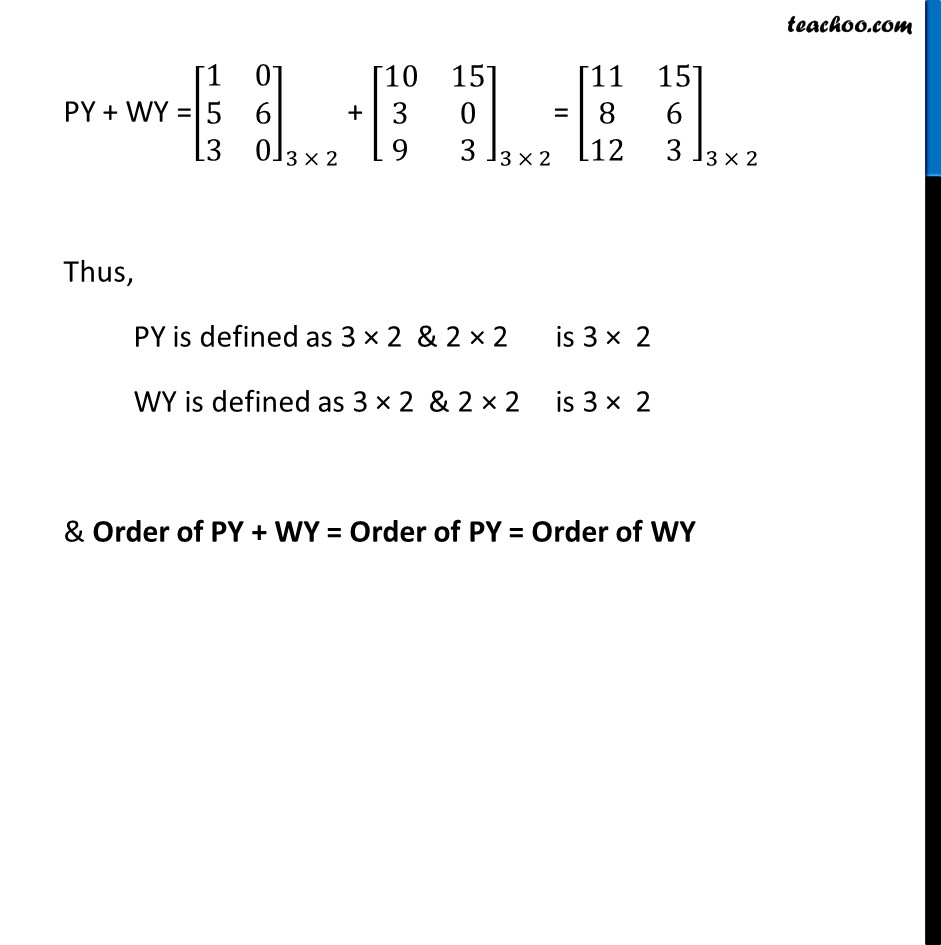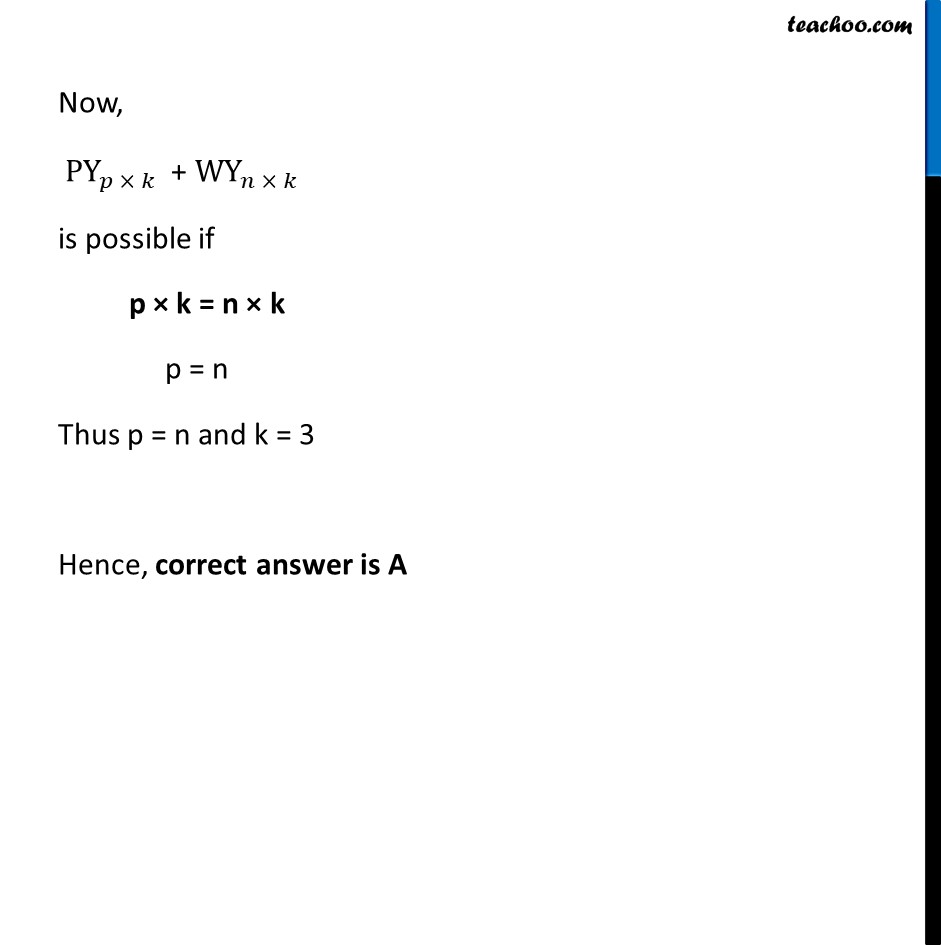



Ex 3.2
Last updated at Feb. 14, 2025 by Teachoo




Transcript
Ex 3.2, 21 (Introduction) Assume X, Y, Z, W and P are matrices of order 2 × n, 3 × k, 2 × p, n × 3 , and p × k respectively. The restriction on n, k and p so that PY +WY will be defined are: (A) k = 3, p = n (B) k is arbitrary, p = 2 (C) p is arbitrary, k = 3 (D) k = 2, p = 3 PY + WY =[■8(1&0@5&6@3&0)]_(3 × 2) + [■8(10&15@3&0@9&3)]_(3 × 2)= [■8(11&15@8&6@12&3)]_(3 × 2) Thus, PY is defined as 3 × 2 & 2 × 2 is 3 × 2 WY is defined as 3 × 2 & 2 × 2 is 3 × 2 & Order of PY + WY = Order of PY = Order of WY Ex 3.2, 21 Assume X, Y, Z, W and P are matrices of order 2 × n, 3 × k, 2 × p, n × 3 , and p × k respectively. The restriction on n, k and p so that PY +WY will be defined are: (A) k = 3, p = n (B) k is arbitrary, p = 2 (C) p is arbitrary, k = 3 (D) k = 2, p = 3 Order of P is p × k Order of Y is 3 × k PY = [P]_(p × k) [Y]_(3 × 𝑘) This is possible only if k = 3 So, 〖𝑷𝒀〗_(𝒑 × 𝒌) Order of W is n × 3 Order of Y is 3 × k WY = [W]_(𝑛 ×3) [Y]_(3 × 𝑘) Since 3 = 3 it is defined So, 〖𝑾𝒀〗_(𝒏 × 𝒌) Now, PY_(𝑝 × 𝑘) + WY_(𝑛 × 𝑘) is possible if p × k = n × k p = n Thus p = n and k = 3 Hence, correct answer is A